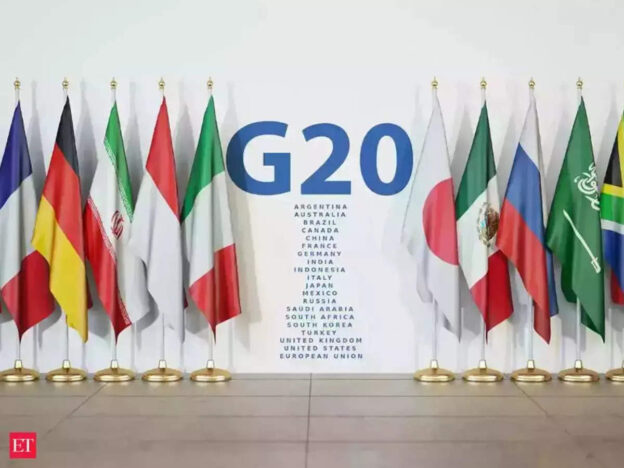Top 10 countries to become global superpowers in the next decade: While the traditional superpower, the US, remains the dominant military, political, and economic power, countries like India and others are rapidly positioning themselves as influential players on the world stage.
The world’s biggest superpowers in 2035: Brexit, the coronavirus pandemic, and trade disputes may create economic headwinds; however, despite these challenges, the global economy will likely continue growing rapidly over the next decade.
The UN projects that the world’s population will reach 8.5 billion by 2030, while the global economy is expected to grow steadily at a growth rate of 3.2 per cent in 2024 and 3.3 per cent in 2025, as forecast by the IMF.
Notably, even global defence expenditure has risen by 6.8 per cent in real terms, reaching $2,443 billion compared to last year, with military expenditures increasing in all the major regions—America, Europe, Asia, the Middle East, and Africa, according to SIPRI.
As a result, the global balance of power will likely transition from a unipolar system to a multipolar framework where power is distributed among various states, corporations, and non-state actors as emerging economies rise, technological advancements accelerate, and geopolitical dynamics shift.
Factors such as economic growth, military strength, technological innovation, and political influence will determine which countries emerge as the global superpowers of the future.
Ray Dalio, in his ‘Great Powers Index 2024,’ revealed the world’s superpowers in the next 10 years, based on their total strength on various metrics, including economic output, military strength, trade, and per capita strength.
While the traditional superpower, the US, remains the dominant military, political, and economic power, countries like China, India, and other nations are rapidly positioning themselves as influential players on the world stage.
Top 10 countries likely to become Global Superpowers in the next decade
The United States and China are the two most powerful countries globally, with the US expected to remain the world’s leading superpower in the next decade.
The US dominates global financial markets and technological innovation, with the US dollar accounting for 85% to 90% of foreign currency exchange trades, 59% of foreign exchange reserves, and 61% of global stock market capitalisation.
Following the US is China, with its growing military capabilities, largest naval fleet, and role as a primary trading partner contributing to its position as a global superpower in the next decade.
However, it may need to navigate weaknesses like high external conflict risks and high debt levels.
| Rank | Country | Total Strength | Per Capita Strength |
| 1 | United States of America | 0.89 | 0.71 |
| 2 | China | 0.80 | 0.30 |
| 3 | Eurozone | 0.56 | 0.43 |
| 4 | Germany | 0.38 | 0.54 |
| 5 | Japan | 0.33 | 0.40 |
| 6 | South Korea | 0.32 | 0.54 |
| 7 | India | 0.30 | 0.07 |
| 8 | United Kingdom | 0.29 | 0.46 |
| 9 | France | 0.27 | 0.45 |
| 10 | Russia | 0.26 | 0.28 |
Source: Great Powers Index 2024 by Ray Dalio
Note: The strength gauge, an index from 0 to 1, measures economic size, currency strength, capital markets, military strength, internal and external order, education, innovation, trade competitiveness, geographic advantages, infrastructure investment, civility, and rule of law.
Where does India stand?
 The projection for India’s GDP growth for 2025 remains unchanged at 6.6 per cent in January. (file photo)
The projection for India’s GDP growth for 2025 remains unchanged at 6.6 per cent in January. (file photo)
India ranks seventh among global superpowers and is set to achieve the fastest real GDP growth over the next decade.
The country is in a highly favourable position in its economic and financial cycles, with a low debt burden and strong projected real growth over the next ten years (6.3% per year).
According to the report, with an expected growth rate of around 6%, factors such as modest workforce expansion, competitive labour, high investment rates, and a favourable cultural environment will drive this growth.
Notably, S&P Global Market Intelligence predicts that India’s nominal GDP will nearly double to more than $7 trillion by fiscal 2030-31, up from $3.6 trillion in fiscal 2023-24.
According to S&P, this would make India the world’s third-largest economy, increasing its proportion of global GDP from 3.6% to 4.5% and elevating its per capita income to the upper-middle-income level.
https://indianexpress.com/article/trending/top-10-listing/top-10-countries-to-become-global-superpowers-india-position-explained-9588939/lite/





